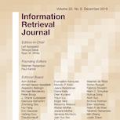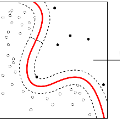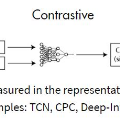Increasing deployment of photovoltaic (PV) plants requires methods for automatic detection of faulty PV modules in modalities, such as infrared (IR) images. Recently, deep learning has become popular for this. However, related works typically sample train and test data from the same distribution ignoring the presence of domain shift between data of different PV plants. Instead, we frame fault detection as more realistic unsupervised domain adaptation problem where we train on labelled data of one source PV plant and make predictions on another target plant. We train a ResNet-34 convolutional neural network with a supervised contrastive loss, on top of which we employ a k-nearest neighbor classifier to detect anomalies. Our method achieves a satisfactory area under the receiver operating characteristic (AUROC) of 73.3 % to 96.6 % on nine combinations of four source and target datasets with 2.92 million IR images of which 8.5 % are anomalous. It even outperforms a binary cross-entropy classifier in some cases. With a fixed decision threshold this results in 79.4 % and 77.1 % correctly classified normal and anomalous images, respectively. Most misclassified anomalies are of low severity, such as hot diodes and small hot spots. Our method is insensitive to hyperparameter settings, converges quickly and reliably detects unknown types of anomalies making it well suited for practice. Possible uses are in automatic PV plant inspection systems or to streamline manual labelling of IR datasets by filtering out normal images. Furthermore, our work serves the community with a more realistic view on PV module fault detection using unsupervised domain adaptation to develop more performant methods with favorable generalization capabilities.
翻译:光电( 光电) 植物的日益部署要求用红外( IR) 图像等模式自动检测有缺陷的光电模块的方法。 最近, 深层次的学习已经为此变得很受欢迎。 但是, 相关工作通常会抽样列, 测试来自相同分布点的数据, 忽略不同光电厂数据之间的域变换。 相反, 我们将错觉定义为更现实的、 不受监督的域变问题, 我们训练了一个源光电厂的贴标签数据, 并对另一个目标工厂进行预测。 我们训练了一个 ResNet-34 的螺旋神经网络, 并有监督的对比性损失。 在上面, 我们使用一个 kear 最接近的邻居分类器来检测异常。 我们的方法在接收器操作特性( AUROC) 下实现一个令人满意的区域, 忽略了73. 3% 到96.6% 的域变换域数据组合为292百万 IR, 手动图像有8.5% 。 在某些情况下, 它甚至会形成一个硬的光电流交叉性神经分级分类, 。 将一个固定的决定门槛在79.4 % 和77. 1 的更精确的直径的直置的,, 的变变的 的 的 的变的 的 的 的 的变正态, 以我们的正常的变正态的变正态的变式的变的变的变的变的变式的变的变的变的变的变的变的变式的变的变的变的变的变的变的变的变的变的变的变的变的变的变的变的变的变的变的变的变的变的变的变的变的变的变的变的变的变的变的变的变的变的变的变的变的变的变的变的变的变的变的变的变的变的变的变的变的变的变的变的变的变的变的变的变的变的变的变的变的变的变的变的变的变的变的变的变的变的变的变的变的变的变的变的变的变的变的变的变的变的变的变的变的变的变的变的变的




